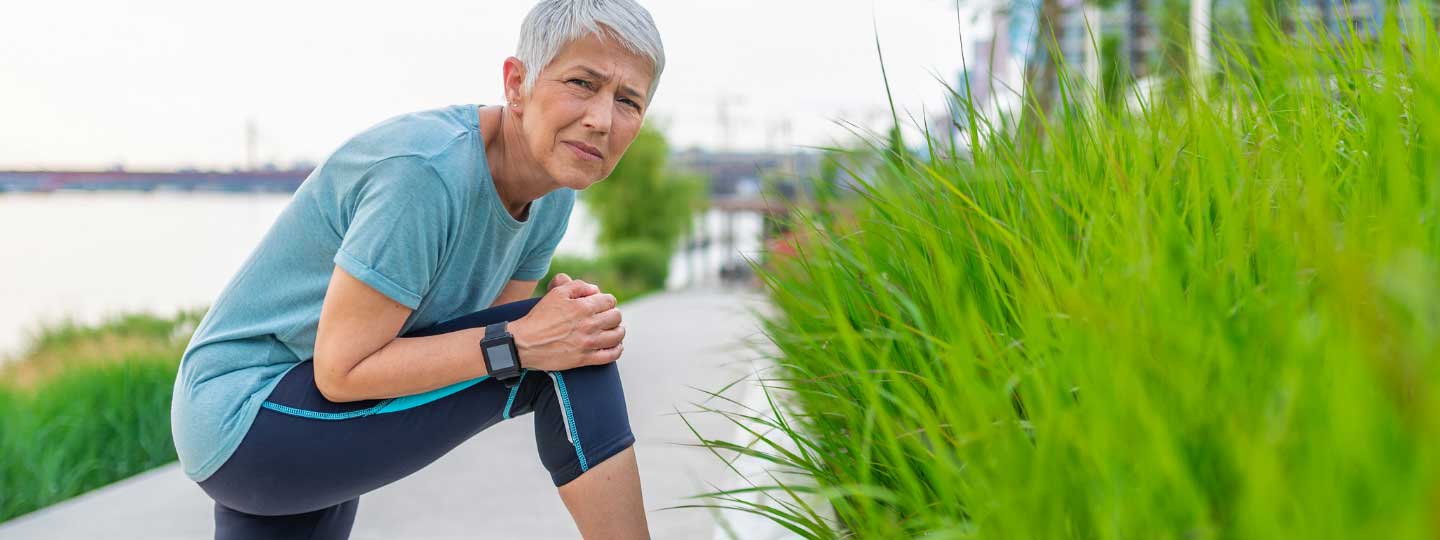How I keep active with arthritis
02 August 2022
"Before being diagnosed with osteoarthritis, running was my main hobby." Jane Midgley started running when she was 26. She was in her late 50s when her osteoarthritis was diagnosed. Her doctor and her physio told her that her days as a runner were over. "I thought my world had ended," she says.
Unlike Jane, Gemma Squires was not a runner before her diagnosis. Gemma had lived with pain and weakness in her hands since her mid-20s, but she was in her 30s when psoriatic arthritis was diagnosed. "By then, I was having trouble moving, and I was exhausted all the time," she says.
Starting over
Jane’s physio suggested she take up cycling, which she enjoyed, but she missed running. However, she knew a woman with osteoarthritis who continued to run. "She told me that she did a lot of strengthening work at the gym. It gave me hope that there might be a way to be able to run again."
Jane started doing knee-strengthening exercises given by her physio, and the exercises from Versus Arthritis’ ‘Let’s Move With Leon’ programme. She also joined her local Parkrun, but as a walker at first.
"I found it very hard to see other people running, because I was frustrated that I couldn’t," she says. "But I had to accept my limitations and persevered in the hope that I might be able to run it one day. When I thought my knees were strong enough, I started to run 50m, which felt great. Each week, I’d build up the distance a bit more, until I was able to run the whole thing, which was just wonderful."
Passing comment
For Gemma, medication helped her manage her pain and, two years after diagnosis, she was more active. "I started running seriously after someone made a passing comment that I wouldn’t manage a half-marathon. Well, I did it, and have since run 12 half-marathons, two metric marathons and loads of 10k races."
Of course, it hasn’t been plain sailing and Gemma has had to find ways to adapt her hobby to her condition. "I have made errors along the way and exhausted myself. But now I listen to my body: on some days running is too painful, so I stop."
Gemma also practises Pilates and says stretches after a run are essential. "I use compression sleeves on my longer runs to help with muscle recovery, and I bought supportive running shoes, because I now have arthritis in my ankles and knees. Also, my massage gun has been a great investment! But the key is not overdoing it."
Wellbeing workout
For both Jane and Gemma, the benefits of running go far beyond the thrill of the race. "I believe that running has prevented my arthritis from getting worse," says Gemma. "It’s become part of my self-care; it keeps me sane. I call it my physical meditation."
Jane has had other health issues, including overcoming breast cancer. Exercise helps her enormously. "It has definitely got me through some very dark times," she says. "Being out in nature is hugely beneficial; it also helps me control my weight and it makes me feel like I have achieved something positive." Gemma agrees: "I would be lost if I couldn’t run."
Top Tips
- Look for aids you can use to support you when doing your hobby, such as kneeling pads or ergonomic tools for gardening or DIY; poles to use when walking; and compression support sleeves and gloves for use during anything from painting to playing football.
- Supportive footwear is essential for any hobbies where you are on your feet for any length of time, so do spend some time making sure any shoes you buy are comfortable.
- Don’t overdo it. Making yourself tired will only increase your symptoms and pain, and undo all the mental and physical benefits of continuing your hobby.
- Accepting your limitations is often one of the hardest things, but remember you are not alone. Look out for local interest groups where you can meet others for support and friendship and can carry on doing what you love at your own pace, such as at your local leisure centre, local activity groups or Parkruns. We also have information on local support groups.
- Gentle exercises can help you to keep active and able to continue doing what you love.
We’re here whenever you need us
- If you need advice or support, you can call our free helpline on 0800 5200 520
- Chat to our Arthritis Virtual Assistant
- Join our online community
- Stay in touch and follow us on Twitter, Facebook and Instagram.